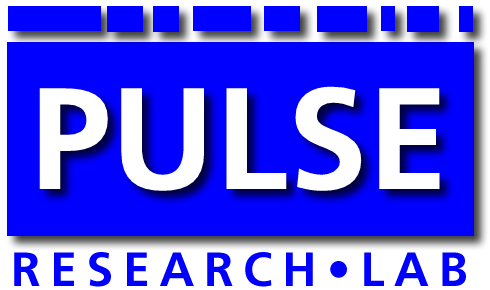Physics and Chemistry
Physics and Chemistry Timing Solutions:

PRL modules are used in accelerator labs around the world for timing distribution, frequency division, data acquisition triggering, and data translation.
Signal Buffering and Distribution:

Our most common physics application is fanout of a data, trigger or timing signal to multiple receivers, such as counters, oscilloscopes, logic analyzers, oscilloscopes, etc. Fanout buffers are different from RF splitters (even active splitters) because fanout buffers regenerate clean logic signals.
Our fanout buffers are also popular because they include 50 Ω drive capability, critical for maintaining signal integrity over long cables.
Popular models include:
- PRL-434A, 1:4 NECL Fanout Buffer, 4+ GHz
- PRL-434LP, 1:4 LVPECL Fanout Buffer, 4+ GHz
- PRL-424LV, 1:4 LVDS Fanout Buffer, 1.25 GHz
- PRL-414B, 1:4 TTL Fanout Buffer, 130 MHz
- PRL-430AN, 2 Ch. NECL Line Driver/Receiver
- PRL-431AN, 1:2 NECL Fanout Buffer, 3+ GHz
- PRL-444, 4 Ch. TTL Line Driver with High-Z Input
A complete list of models is available on Fanout Buffers page.
Frequency division
The time base of an accelerator or precision reference can be divided with very low jitter  to trigger lower-frequency phenomena or instrumentation synchronously. Lasers, data acquisition systems, oscilloscopes, and streak cameras can be triggered at different rates, including non-binary and prime-number divisors from the reference with precise phasing relative to the RF.
to trigger lower-frequency phenomena or instrumentation synchronously. Lasers, data acquisition systems, oscilloscopes, and streak cameras can be triggered at different rates, including non-binary and prime-number divisors from the reference with precise phasing relative to the RF.
Our physics customers demand high frequency, large division ratios, and low jitter. Our edge-triggered designs produce extremely low jitter with very wide operating ranges (DC to fmax, except for the AC-coupled PRL-257-8). Ratios can be fixed or programmable from f/2 up to f/10000, and multiple units can be cascaded for ratios into the millions. Popular models include:
- PRL-260BNT, 2-Phase Programmable NECL/TTL Frequency Divider, f/2 - f/4096
- PRL-257-8, 12 GHz, Programmable 2-Φ divider, f/8-f/128
- PRL-255N, NECL divider, ÷2, ÷4
- PRL-220A, TTL divider, ÷2, ÷4, ÷8, ÷16
- PRL-230, TTL divider, ÷10, ÷100, ÷1000,÷10,000
Independent review shows 1-sigma RJ of less than 1 ps for the PRL-257-8:

Fig. 1: PRL-257-8 Jitter Performance*, 10.3125 GHz clock divided by 64
Sine wave to square wave conversion

Frequency sources are often supplied as sinewaves, whereas trigger inputs often require logic-level square waves. Furthermore, the slow slew rates of sinewaves can often degrade jitter performance, especially if the signals are teed or branched off to multiple receivers. PRL offers variety of ways to convert sinewave to square waves with fast, low-jitter edges and logic-level compatibility to drive your trigger inputs.
Nearly All PRL units with ECL-structured input can be driven by AC-coupled sinewaves with minimum amplitudes of 200 mVpp.
For recovering smaller signals we offer comparator inputs with sensitivity as low as 10 mVpp.
Sine- to square-wave conversion is available with or without frequency division. Popular models include:
- PRL-255CN, Small-signal frequency divider (f/2 & f/4), NECL outputs
- PRL-350ECL, 2 Channel Comparator with NECL Outputs
- PRL-350TTL, 2 Channel Comparator with TTL Outputs
- PRL-434A, 1:4 ECL Fanout Buffer
There are many, many ways to configure one or more PRL modules to handle sine- to square wave conversion. Please email support@pulseresearchlab.com for pre-sales support or application assistance.
Logic Translation:
The alphabet soup of digital data standards can be daunting, especially since they are nearly all mutually incompatible. PRL modules enable translation of trigger, data, and clock signals to/from NECL, CML, RS-422, and 124 Ω ECL. Popular models include:
PRL modules enable translation of trigger, data, and clock signals to/from NECL, CML, RS-422, and 124 Ω ECL. Popular models include:
- PRL-425N, Converts LVDS or RS-422 to NECL
- PRL-426N, Converts NECL to LVDS
- PRL-422NECL, Converts NECL to RS-422
- PRL-450ND, Converts NECL to TTL
- PRL-420ND, Converts TTL to NECL
A complete list of models is available on Level Translators page.
* These test results, though typical, are not guaranteed performance specifications.
